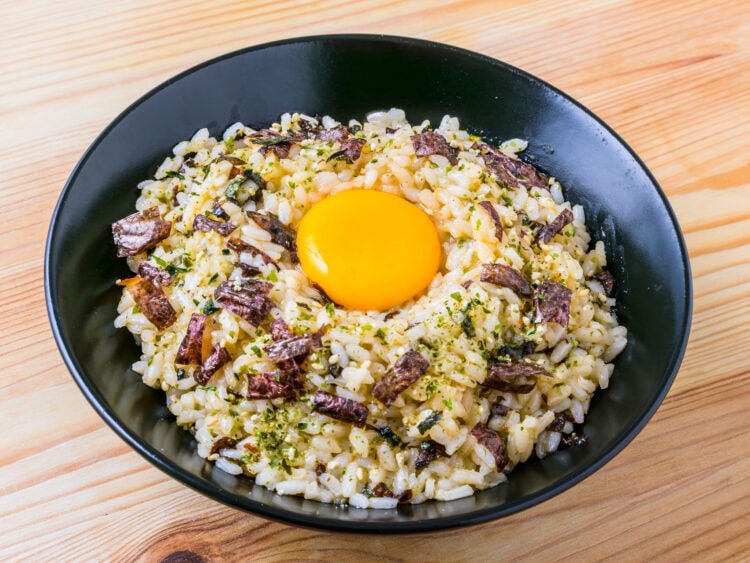A delicious traditional Japanese dish of rice and egg that is perfect for starting the day!
On difficult mornings, Tamago Kake Gohan can be reason enough to get out of bed. If you’re skeptical, know that in Japan it is a breakfast staple. Invigorating, savory, and satisfying, much like a full English breakfast, it is the perfect source of energy for an early start!
Tamago Kake Gohan: what is it?a0
While mornings are often associated with sweet treats like pastries and jam-covered toast, Tamago Kake Gohan, or TKG (卵かけご飯), gives breakfast a welcome jolt. It is still a comforting Japanese dish – we do not want anything too challenging first thing – and it is also quick and easy to prepare.
In practice you need only rice, a raw egg, and a few seasonings such as soy sauce and mirin. The rice is placed in a bowl and crowned with the egg.
For toppings, feel free to sprinkle on furikake and a few slivers of nori. Do not worry, the flavors are gentler than they appear. Mix everything so that the egg blends completely with the rice. The result is a creamy texture, almost like a sweet-and-savory risotto.a0
It is admittedly a distinctive dish, and it belongs to the Maze Gohan family.
Kezako? (What’s that?) It is a Japanese style in which rice is cooked and then mixed with seasonal ingredients, most of which are prepared separately. That is the key difference from the Takikomi Gohan (of which the Mame Gohan is a member!).
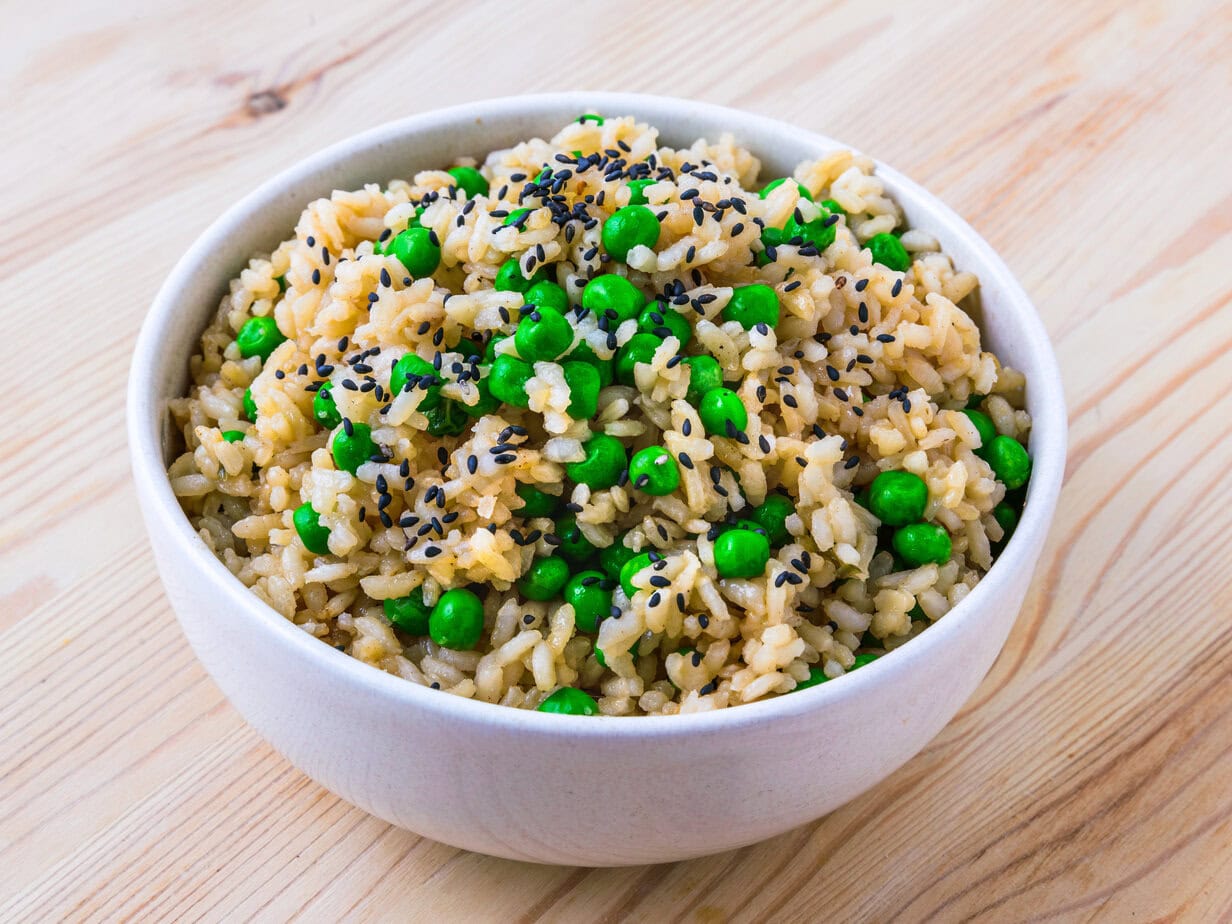
In Takikomi Gohan, the ingredients cook along with the rice. Both styles are seasoned with soy sauce, dashi, and mirin, so the distinction is subtle, yet they remain two separate dishes.a0
Where does Tamago Kake Gohan come from?a0
The word “Tamago” may already ring a bell if you love Japanese cuisine. For centuries, eggs were avoided in Japan for religious reasons.
They entered the diet only in the Edo period (1603-1868). Since then the Japanese have more than made up for lost time with Tamagoyaki, Omurice, Tamago Sando, and many others.a0
Tamago Kake Gohan is thought to have come from Misaki-cho in Okayama Prefecture, on the southern part of the Japanese island of Honshu. Journalist Ginkgo Kishida is credited with creating it during the Meiji era (1868-1912). Thanks to his profession, the dish first appeared in print before spreading to households.
It soon became a breakfast favorite because it delivers everything the body needs to face the day. Fun fact: its popularity earned it a spot on the calendar. While on 30 October France celebrates Saints Bienvenue, in Japan it is Tamago Kake Gohan Day!a0
The main ingredients of Tamago Kake Gohana0
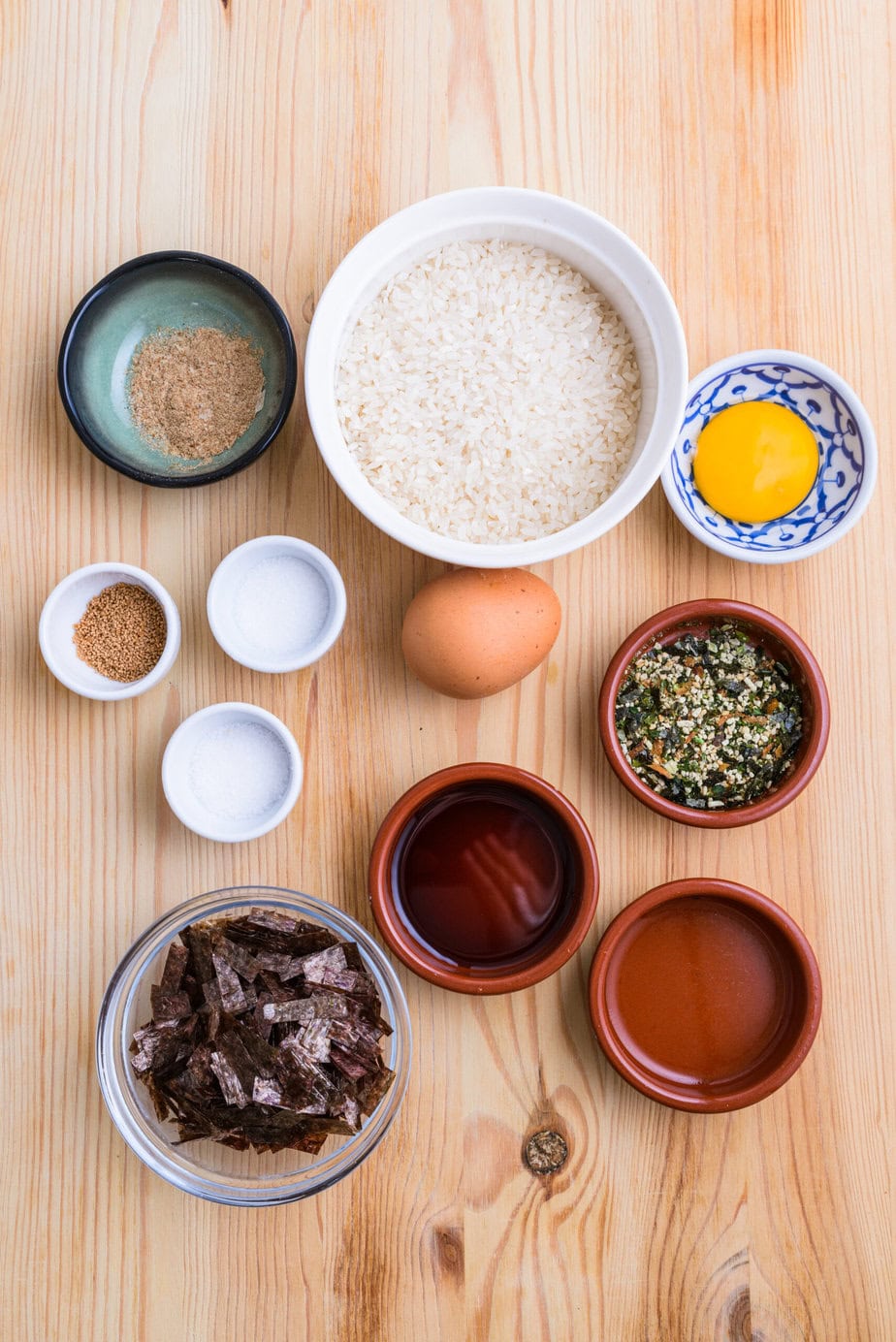
Sushi rice: The choice is simple: once cooked, sushi rice is pleasantly sticky, making it much easier to pick up with chopsticks.
Eggs: You will need one whole egg plus an extra yolk. Because they are eaten raw, quality is essential; free-range eggs are best.
Light soy sauce: Use it sparingly! The goal is not to drown the rice and mask the other flavors. About half a teaspoon (or to taste) should provide the right level of salt.
Mirin: Mirin balances the soy sauce with gentle sweetness. To keep the dish in check – neither too sweet nor too salty – there is no need to be heavy-handed.
Dashi: A pinch of powdered dashi adds umami that the soy sauce and mirin will amplify. This trio never fails to season dishes well.a0
Katsuobushi: Katsuobushi is the same bonito that forms the base of dashi, shaved into dried, smoked flakes. It injects deep flavor into the bowl, much like dashi itself.a0
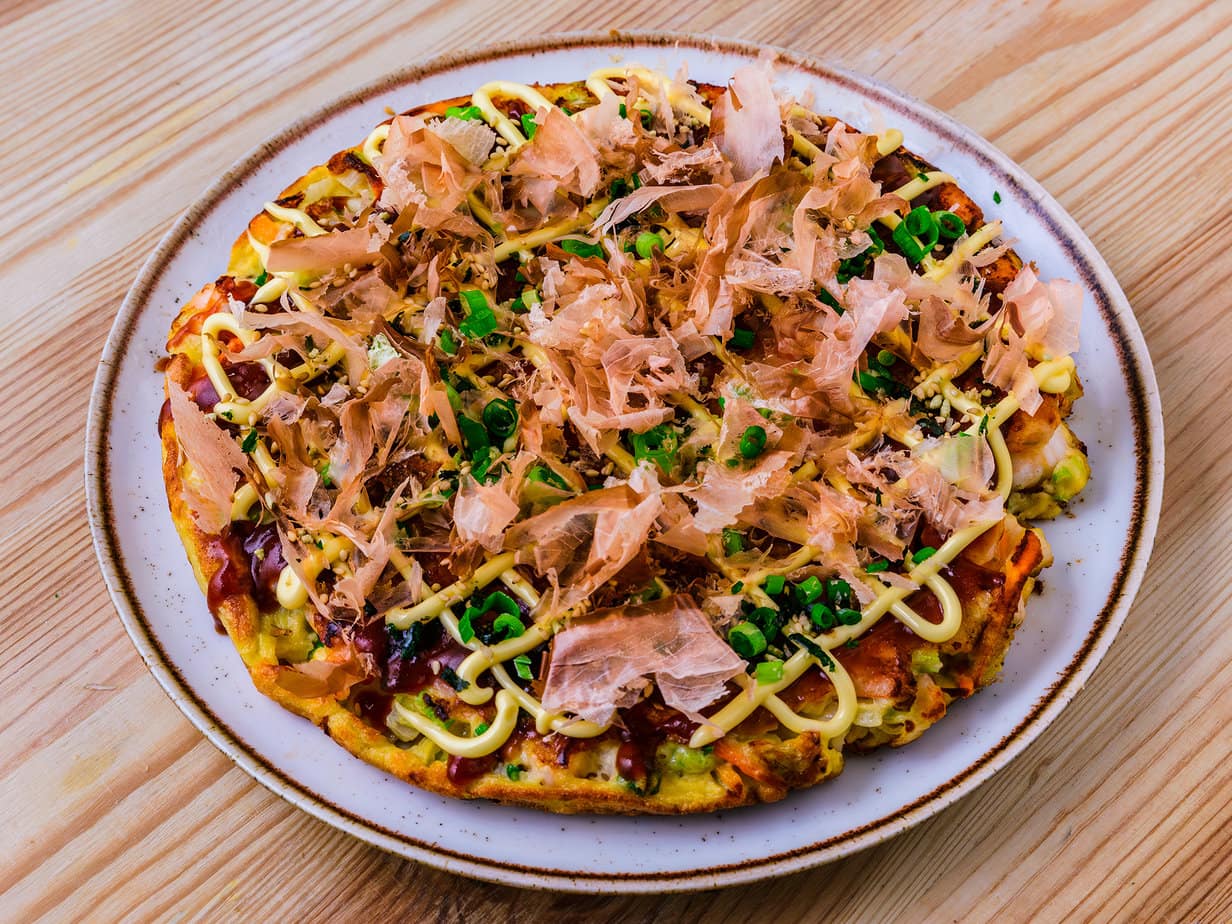
Glutamate: The ABC of Asian cooking. In Europe it is seldom used, yet on the other side of the globe it goes into almost everything. Like salt, it is a flavor enhancer that intensifies taste without making a dish too salty.
Furikake: Furikake is a blend of sesame seeds, kelp, sugar, salt, and glutamate. At the end of preparation it is common to add toppings such as furikake, nori or natto (fermented soybeans). In short, a small extra that is always appreciated on rice.
Tips for making Tamago Kake Gohan successfully
Does the idea of a raw egg at breakfast put you off? Swap it for an Onsen Tamago and you will still capture the essence of Tamago Kake Gohan.a0
If you do opt for the raw egg, whisk everything together with chopsticks until the mixture turns pale yellow. Season cautiously, adding soy sauce a drop at a time to suit your taste; too much can be hard to handle first thing in the morning.
Another time-saving tip: use leftover rice from the day before. Just reheat it, season, and you are ready to eat!
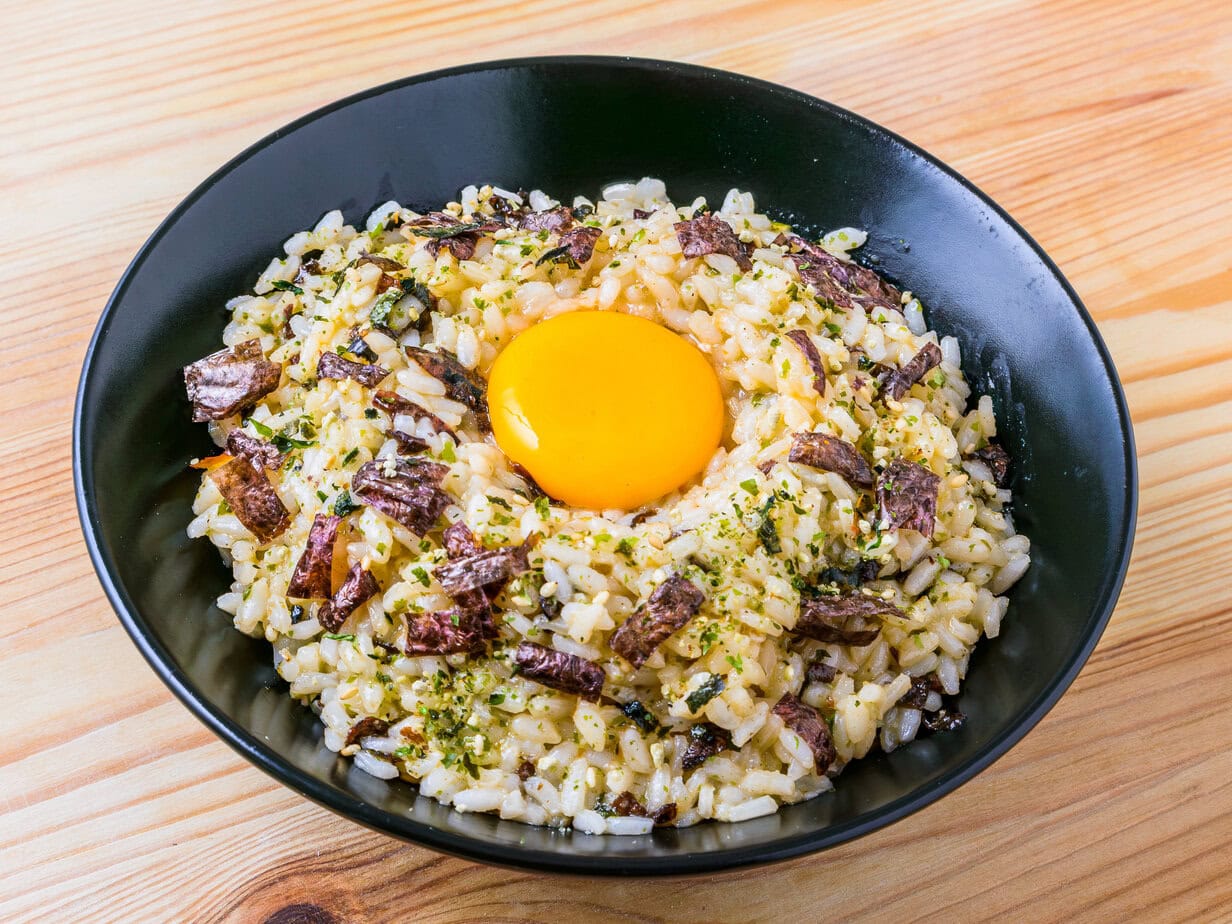
Authentic Tamago Kake Gohan
Equipment
Ingredients
- 150 g sushi rice uncooked weight
- 1 egg
- 1 egg yolk
Seasonings
- 0.5 teaspoon light soy sauce or to taste
- 0.5 teaspoon mirin
- 1 pinch salt or to taste
- 1 pinch MSG
- 0.5 teaspoon dashi powdered
- 1 teaspoon katsuobushi ground into powder
Toppings
- Furikake to taste
- 2 sheets nori very finely sliced
Instructions
- Cook the rice in your preferred way.150 g sushi rice
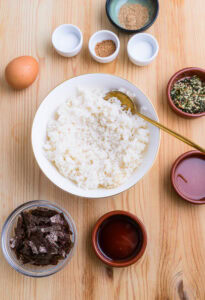
- Spoon the steaming rice into a bowl and make a small well in the centre. Crack the whole egg into the well.1 egg
- Drizzle in all of the seasonings.0.5 teaspoon light soy sauce, 0.5 teaspoon mirin, 1 pinch salt, 1 pinch MSG, 0.5 teaspoon dashi, 1 teaspoon katsuobushi
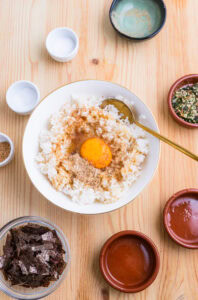
- Using chopsticks, whisk vigorously until the mixture turns pale, foamy, and silky. Taste and adjust the seasoning if needed.
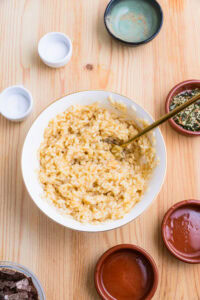
- Finish with furikake and nori, then nestle the extra egg yolk on top before serving.1 egg yolk, Furikake, 2 sheets nori
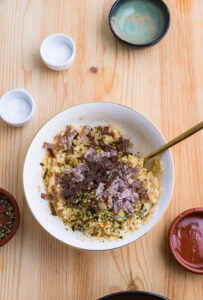
Notes
Nutrition
Culinary sources
For this recipe I drew on the excellent version from Serious Eats. After trying several, it is the one that most closely matches what I have tasted in restaurants. Technically the seasonings are optional, but they are essential if you want the dish to transport you, so do not skip them!
For an extra kick, sprinkle on a little togarashi
